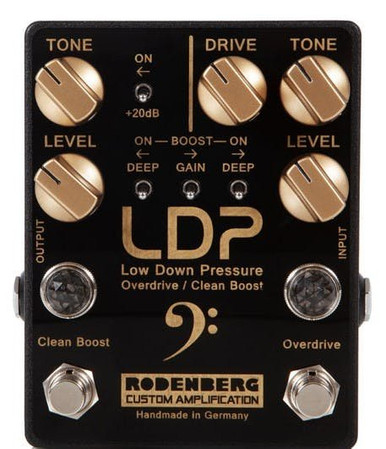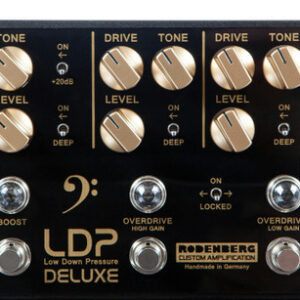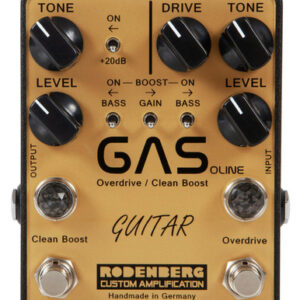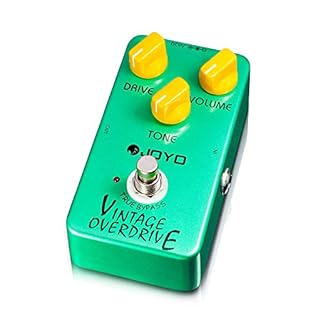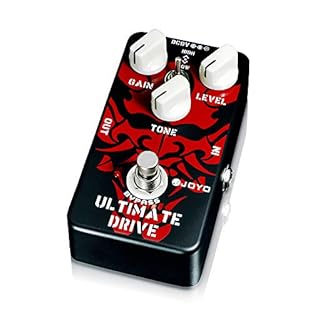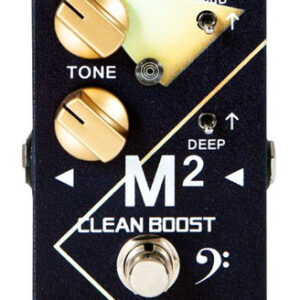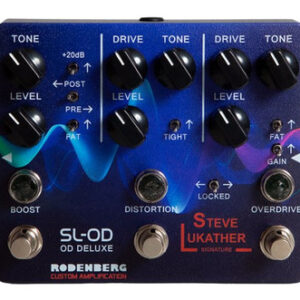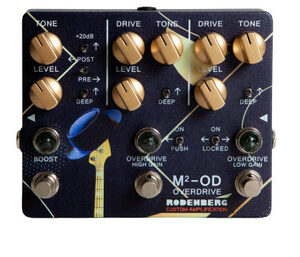Tasty Pedals made by Rodenberg
Rodenberg Amplification build high-end overdrives and boost pedals crafted in Germany with exceptional precision. Favoured by professional players for their clarity, punch, and dynamic response, Rodenberg pedals like the GAS-808 and Commander series deliver pure amp-like tone with remarkable build quality. Each unit is hand-wired, featuring top-grade components and a solid feel that reflects the brand’s engineering roots — perfect for players chasing boutique drive with real authority.
Just Pedal Ingredients.
Bass. Boost — A boost pedal is like that extra drizzle of olive oil or pinch of salt that brings the whole dish to life. It doesn’t change the flavour — it enhances it. By increasing your signal level without colouring your tone, a boost adds clarity, punch, and presence to whatever’s already on your plate. Whether you use it to push your amp into natural overdrive, lift a solo above the mix, or add that last bit of sparkle before serving, a good boost pedal is the chef’s secret ingredient. Simple, pure, and essential — it’s the appetiser that makes every course taste better.. Clean. Guitar Pedals — Your pedal is like a signature dish for your sound — a flavour-packed creation that transforms the bland ingredients of your guitar into something unforgettable. Each one adds its own seasoning, texture, and heat, turning a simple meal into a feast of tone.
These tasty little boxes sit in a row, like plates on a buffet, letting you mix and match flavours as you play. With one tap of your foot, you can swap sweet for spicy, subtle for smoky, and serve up something completely new. From the comfort food of warm overdrive to the fiery kick of fuzz, from smooth jazz sauce to heavy-metal spice, pedals give players a full menu of options to express their taste. And just like with food, once you’ve tried one dish, you’ll want to sample them all.
Collecting, trading, and discovering new flavours soon becomes part of the joy of being a tone-loving gourmet geek with a guitar.. New — This is brand new, fresh in, and a UK warranty is included. Very Popular!. Overdrive — Like a golden layer of melted cheese — warm, gooey, and just put it all over. It adds just the right amount of richness and grit, turning a clean signal into something smooth and savoury. Designed to mimic the natural breakup of a tube amp pushed to its sweet spot, overdrive delivers the flavour of classic rock and blues in every bite. From creamy mid-gain warmth to crisp edge-of-breakup sparkle, it’s the comfort food of guitar tone — simple, satisfying, and endlessly versatile. Whether it’s a mild crunch or a full-bodied roar, overdrive is where good taste begins.. Pedal — Your pedal is like a signature dish for your sound — a flavour-packed creation that transforms the bland ingredients of your guitar into something unforgettable. Each one adds its own seasoning, texture, and heat, turning a simple meal into a feast of tone.
These tasty little boxes sit in a row, like plates on a buffet, letting you mix and match flavours as you play. With one tap of your foot, you can swap sweet for spicy, subtle for smoky, and serve up something completely new. From the comfort food of warm overdrive to the fiery kick of fuzz, from smooth jazz sauce to heavy-metal spice, pedals give players a full menu of options to express their taste. And just like with food — once you’ve tried one dish, you’ll want to sample them all.
Collecting, trading, and discovering new flavours soon becomes part of the joy of being a tone-loving gourmet geek with a guitar..
